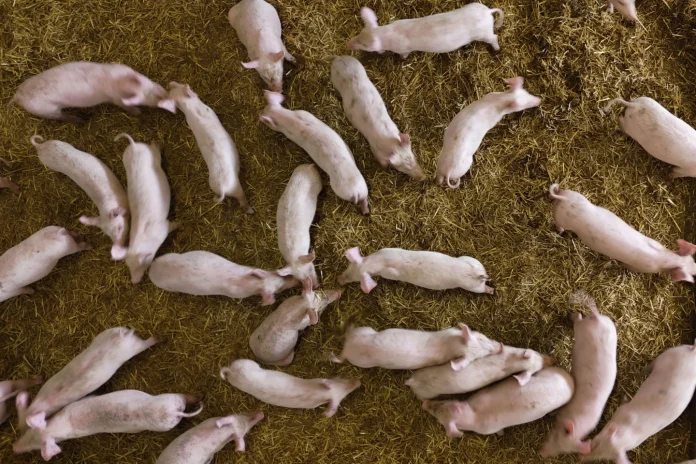Giovanni Airoli had one of his sows test positive for African swine fever at the end of August. Within a week, all 6,200 sows, piglets and fattening pigs on his farm south of Milan were slaughtered under strict protocols to stop the disease threatening Italy’s €20bn prosciutto, cured sausages and pork industry.
Since swine plague appeared on the peninsula in January 2022, nearly 120,000 pigs have been slaughtered in Italy – three-quarters of them in the last two months alone as the emergency intensified.
A total of 24 pig farms with a total of more than 100,000 pigs have been affected so far this year, according to an Italian health ministry report on September 20.
“It’s a desolation,” Airoli said as he left his farm in the northern region of Lombardy, which is ground zero of Italy’s swine fever epidemic. No one but workers are allowed in here, and that under strict hygiene protocols that require clean overalls and boots only indoors. Airoli also added:
“It happened to us despite applying all of the safety measures required. There was obviously a failure. We don’t understand what it could have been.”
We’re losing delicacies
The area of greatest concern, where the disease has been confirmed in domestic pigs, spans 4,500 square kilometres (almost 1,740 square miles) and includes neighbouring Piedmont and Emilia-Romagna.
Pig farmers have warned that the plague threatens the €8.2bn prosciutto, sausage and pork delicatessen industry. Prosciutto is considered a national treasure – it is an Italian ham made from ham rubbed with salt. No other ingredients are added.
The effects of the rinderpest outbreak are spreading further. Farmers in the 23,000 square kilometres (8,880 square miles) area are also facing restrictions because of infected wild boars or because they fall into the buffer zone.
New restrictions in swine fever fight
Coldiretti, Italy’s influential agricultural lobby group, estimates the damage to the industry so far at 500 million euros ($554 million), partly due to the import ban, and warns that some farmers risk losing their livelihoods. Experts estimate the sector generates 20 billion euros ($22 billion) across the supply chain, from farms where pigs are raised to factories where hams are cured. Confindustria President Ettore Prandini wrote in a recent letter to the agriculture minister:
“The spread of swine fever has reached alarming levels, putting at risk not just the health of the animals but of the entire pork sector.”
Over the summer, the government appointed a new special commissioner to fight the epidemic, who is Giovanni Filippini, an experienced veterinarian and long-time head of Italy’s animal health authority, who eradicated swine fever on the island of Sardinia.
The previous two commissioners had focused on sending the army to hunt wild boars, which drew opposition from sport hunters and the EU, which emphasised that hunting risked sending infected animals into new areas.
Instead, Filippini imposed new restrictions on access to farms and animal movements, and expanded buffer zones – measures that appear to be having an impact. In Lombardy, only one new outbreak was reported in the last full week of September. Giovanni Loris Alborali, director of the Institute of Animal Health of Lombardy and Emilia-Romagna, said:
“It is a positive sign, but not yet a victory. We must keep the sanitation high and this will help the animals’ health with better growth rates for farmers and fewer antibiotics for consumers in the future.”
Highly contagious viral disease
African swine fever (ASF) is a highly contagious viral disease, usually resulting in 100 per cent mortality in domestic and wild pigs. There is no treatment for the disease. Wild boars are the natural reservoir of ASF. The infection causes fever, vomiting, diarrhoea with blood in pigs and wild boars.
The ASF virus poses no danger to humans, although scientists do not rule out that it can mutate.
